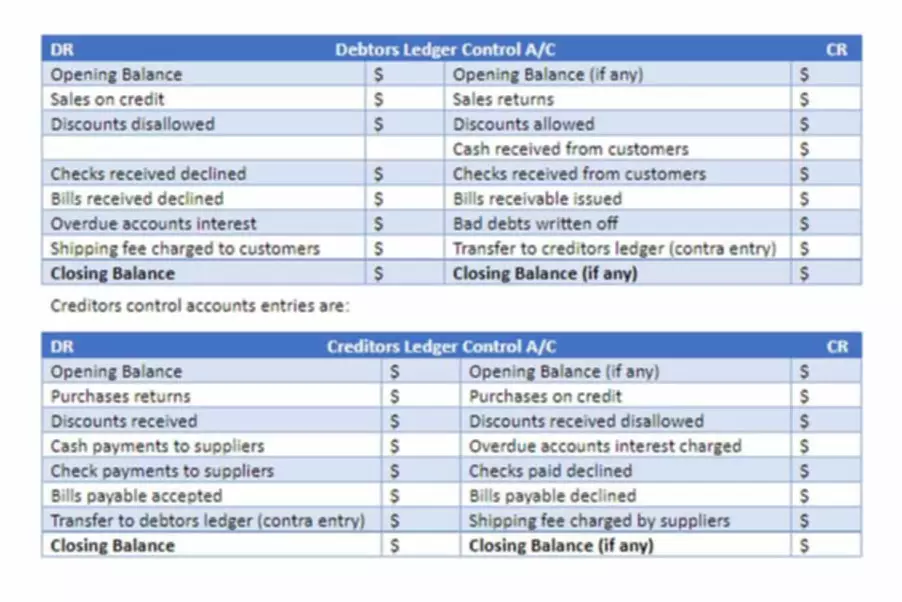Content
- Company Financial Statement Analysis & Interpretation of Financial Statements
- Definition of Vertical Analysis of Income Statement
- What is Vertical Analysis Formula?
- Company Financial Statement Analysis: Spotting Future Trends
- Disadvantages of Vertical Analysis
- Vertical (common-size) analysis of financial statements

”, and you say “$2” because you used your new pay $12 to minus your old pay “$10”. ”, and you say “20%” because you used your raise in dollar, $2, and divide that over your old pay of $10.
- Examine the pros and cons of the vertical analysis formula, and discover examples of how to calculate vertical analysis.
- However, investors should combine horizontal analysis with vertical analysis and other techniques to get a true picture of a company’s financial health and trajectory.
- Unlike Horizontal Analysis, a Vertical Analysis is confined within one year ; so we only need one period of data to derived the percentages and completed the analysis.
- Each common-size line item is the percent of total assets that the line item’s dollar value represents.
- Year 1 Year 2 Year 3Sales 100%100%100%COGS30%29%40%Gross Profit70%71%60%Marketing 5%5%10%In the above table, we see that COGS for the company spiked in year three.
It is also helpful in comparing the financial statements of two companies with the industry average. Another form of financial statement analysis used in ratio analysis is horizontal analysis or trend analysis.
Company Financial Statement Analysis & Interpretation of Financial Statements
The composition of PepsiCo’s income statement remained relatively consistent from 2009 to 2010. The most notable change occurred with selling and administrative expenses, which increased from 34.8 percent of sales in 2009 to 39.4 percent of sales in 2010. This in turn drove down operating income from 18.6 percent in 2009 to 14.4 percent in 2010.
What is the formula of total cost?
Consequently, total cost is fixed cost (FC) plus variable cost (VC), or TC = FC + VC = Kr+Lw.
That result, 24%, will appear on the vertical analysis table beside Salaries for year one. For the balance sheet, the total assets of the company will show as 100%, with all the other accounts on both the assets and liabilities sides showing as a percentage of the total assets number.
Definition of Vertical Analysis of Income Statement
You can see how much debt your company holds in proportion to its assets and how short-term debt directly compares to short-term assets. The higher the proportion of short-term assets, the stronger your company’s working capital position and its ability to meet its near-term obligations. Common size analysis displays each line item of your financial statement as a percentage of a base figure. Common size vertical analysis formula analysis can help you determine how your company is performing year over year, and compared to competitors. It also allows you see the impact of each line item on the overall revenue, cash flow, or asset figures for your company. On the other hand, horizontal analysis looks at changes in specific dollar amounts for each period, highlighting the changes line-by-line over two specific accounting periods.

The following analysis shows that the portion of the cost of sales has increased by over 4% comparing the records of 2017 and 2016. For the income statement, the items of the statement are divided by revenue. At the bottom of the analysis, note that net income, as a percentage of sales, declined by 2.62 percentage points (6.67 percent to 4.05 percent). As a dollar amount, net income declined by $14,096 ($33,333 to $19,237). Management should consider both the percentage change and the dollar amount change.
What is Vertical Analysis Formula?
Ultimately, the way in which you apply a vertical analysis of your accounts to your business will depend on your organisational goals and targets. Most accounting computer programs, including https://www.bookstime.com/ QuickBooks, Peachtree, and MAS 90, provide common-size analysis reports. You simply select the appropriate report format and financial statement date, and the system prints the report.
- Plant and machinery, land and buildings, furniture, computers, copyright, and vehicles are all examples.
- Vertical analysis enables accountants to create common-size measures, which enable them to compare and contrast amounts of different magnitudes in a very efficient manner.
- But this myopic focus can lead to inaccurate conclusions about the health of the business.
- In the expense category, cost of goods sold as a percent of net sales increased, as did other operating expenses, interest expense, and income tax expense.
- Conducting a common size balance sheet analysis can let you quickly see how your assets and liabilities stack up.
- Most business owners tend to focus primarily—even exclusively—on the dollar figures on their financial statements.
The balance sheet is the financial statement that provides a snapshot in time of the company’s financial position. It is composed of assets, liabilities, and stockholders’ equity and demonstrates the accounting equation is in balance.
Company Financial Statement Analysis: Spotting Future Trends
The vertical analysis of the balance sheet will result in a common-size balance sheet. The percentages on a common-size balance sheet allow you to compare a small company’s balance sheets to that of a very large company’s balance sheet. A common-size balance sheet can also be compared to the average percentages for the industry. Vertical analysis can be used with both income statements and balance sheets, with every line item on the financial statement entered as a corresponding percentage of the base item. Vertical analysis is typically used for a single accounting period, whether that’s monthly, quarterly, or annually, and can be particularly helpful when used to compare data for several accounting periods. Horizontal analysis allows investors and analysts to see what has been driving a company’s financial performance over several years and to spot trends and growth patterns.
How do you calculate a 25% profit margin?
Gross margin as a percentage is the gross profit divided by the selling price. For example, if a product sells for $100 and its cost of goods sold is $75, the gross profit is $25 and the gross margin (gross profit as a percentage of the selling price) is 25% ($25/$100).
The proportion of fixed assets and current assets to the total assets is 13.60%. The proportion of fixed assets and current assets to the total assets is 35.88%. The proportion of fixed assets and current assets to the total assets is 37.47%. The proportion of fixed assets and current assets to the total assets is 25.06%. Vertical analysis can also be used for comparing the financial statement of a company with its previous year’s financial statements. Note that the line-items are a condensed Balance Sheet and that the amounts are shown as dollar amounts and as percentages and the first year is established as a baseline.
Liabilities are amounts a company owes like accounts payable and long-term debt. Stockholders’ equity is the amount of capital owned by the investors after the liabilities are accounted for.
- So, it can be concluded that the vertical analysis of the income statement helps in various financial assessments that primarily include trend analysis and peer comparison.
- Remember, on a balance sheet, your base number is always your total assets and total liabilities, and equity.
- Similarly, it shows the distribution pattern of total asserts among current asserts, fixed assets and other asserts.
- ”, and you say “$2” because you used your new pay $12 to minus your old pay “$10”.
- It can be used to compare the operating performance of the subject company to its industry or other companies.
A common size financial statement allows for easy analysis between companies or between periods for a company. It displays all items as percentages of a common base figure rather than as absolute numerical figures. The vertical analysis of financial statements does not help make a firm decision as there is no standard percentage or ratio regarding the change in the income statement components or the balance sheet.
With the three tools of financial statement analysis, one can better understand the financial picture of a company, and therefore will be able to make better decisions for the operation. Vertical analysis is one of the easiest methods for the analysis of financial statements. Another powerful application of a vertical analysis is to compare two or more companies of different sizes. It can be hard to compare the balance sheet of a $1 billion company with that of a $100 billion company. The common-sized accounts of vertical analysis make it possible to compare and contrast numbers of far different magnitudes in a meaningful way. Horizontal analysis is used in the review of a company’s financial statements over multiple periods.
- It is composed of assets, liabilities, and stockholders’ equity and demonstrates the accounting equation is in balance.
- The vertical analysis only reveals that this happened, it doesn’t provide a meaningful explanation for why it happened.
- Most accounting software will let you download your financial statements into Excel.
- When evaluating offers, please review the financial institution’s Terms and Conditions.
- Example of the vertical analysis of the financial statement, which shows the total amount and percentage.
To complete a vertical analysis, you’ll first need to determine what information you’re looking to obtain. For example, many businesses use vertical analysis to compare their financial results to those of other businesses in their industry.